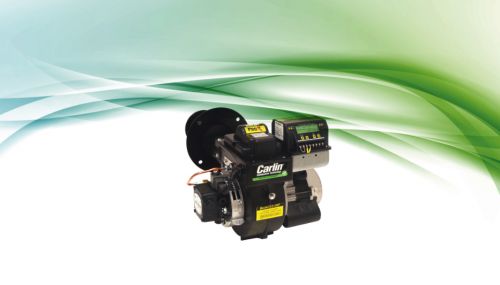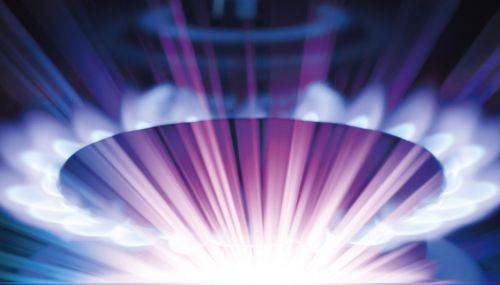All
Hydronics: How to Handle Smart Pumps and Smart Circulators
by Bruce Marshall, Emerson-Swan

Mistakes with flow and resistance can always trip you up
In a time when a modern cell phone has computing power exceeding that of the Apollo 11 spacecraft, the contractor/installer has unprecedented control over how to get the BTUs to where they belong. In fact, it seems like more and more hydronic system components are developing minds of their own.
It has been a long road from those gravity systems, and there have been many bumps along the way. The water molecule has suffered much abuse over this time, between attempts to squeeze it against its will or force it to go where it just didn’t want to. But throughout this time, one thing has remained constant—the science of heating.
Gravity systems relied principally on the science of physics—motion, energy and force. Today’s systems owe much of their success to computer science. Certainly, physics does still play an important role, but the development of the microprocessor and its inclusion in today’s heating control schemes has forever changed the way we think about the creation and movement of heat. And therein lies the trap.
Old School System Design
A properly designed gravity system was about understanding resistance and flow—get one of the two wrong and the operation of the entire system was compromised. Modern systems with advanced control logic are much more forgiving; firing rates can be modulated; flow rates can be varied; differential temperatures can be adjusted; set points can be scheduled; zones can be monitored; temperatures can be regulated; all because of the integrated circuit. However, we must still pay attention to the fundamentals—resistance and flow.
Gravity systems are a thing of the past, as most if not all have been converted to “forced” by the addition of a circulator. This too required an understanding of the fundamentals with regard to resistance and flow. The circulator needed to match the system curve, which was usually low head/high flow, and the piping needed to be reduced at the new circulator to create sufficient head. Ignore one of these two requirements and the system might never work correctly. Fortunately, most of those conversions were done by men with a grasp of the fundamentals of resistance and flow.
But now we live in the age of electronics. We must not only appreciate the fundamentals but also imagine the possibilities. The boiler has a sophisticated operating control that allows any number of adjustments regarding temperature control. Reset, whether built into the boiler control or standalone, provides multiple parameters; the relay package has onboard logic controlling priority and sometimes reset; the circulator may have programmability such as Delta T and set point or Delta P; mixing stations can be manual or electronic providing even more programming choices. Whew! Makes your head spin!
Having control is great, but it can come at a price. With all of the variables that exist with modern controls, it is important to pay attention to the details. Outdoor reset increases efficiency and enhances comfort. This feature is most often included with the boiler control; once programmed, the water temperature will track the changes in outside temperature. However, the relay might also include outdoor reset or other features such as pump post purge, DHW priority, priority protection, pump exercise and expansion capability and more. It is important therefore to fully understand the feature set of each control so that a programming choice on one does not interfere with the other.
Modern circulating pumps are also a lot smarter than their predecessors, having their own built-in programmability. Everything from flow rate to usage monitoring can be adjusted depending on the algorithm. Yet again to avoid conflict, attention needs to be paid to all components.
Bad Physics Still Makes the Phone Ring
And so, with this much control available to us…what about the fundamentals? Well, they are just as important as ever because the physics never change. We have the capability to vary the flow and/or temperature, but that doesn’t mean we can get away with incorrect pipe or circulator sizing. The algorithms will try to compensate for any deficiencies but there will come a point when an inadequate delivery system will defeat their preprogrammed strategies, and this is usually when the phone starts to ring for insufficient heat or hot water.
The Universal Hydronics Formula remains just that – universal! To achieve and maintain proper delivery of BTUs, attention must be paid to this formula –
GPM (flow rate) = BTUH (heating load) ÷ (ΔT x 500) (design temperature drop)
No matter what the heating system consists of, this rule always applies. Mess with any of the three variables and you mess with danger, i.e. insufficient flow = insufficient heat.
Sophisticated computer algorithms may go some way towards compensating for system inadequacies but proper attention to the fundamentals will remove these issues entirely. Boiler controls have come a long way in a few years but the science of heating remains the same – resistance and flow.
Related Posts
 Burner Questions? The Answer Is in Your Hands.
Burner Questions? The Answer Is in Your Hands.
Posted on April 17, 2024
 Carlin Begins Production on UL Listed B100 Burners
Carlin Begins Production on UL Listed B100 Burners
Posted on December 7, 2023
 NORA Looks at Indoor Air Quality
NORA Looks at Indoor Air Quality
Posted on December 7, 2023
 Why Market Renewable Propane for Your Business?
Why Market Renewable Propane for Your Business?
Posted on October 6, 2023
Enter your email to receive important news and article updates.
